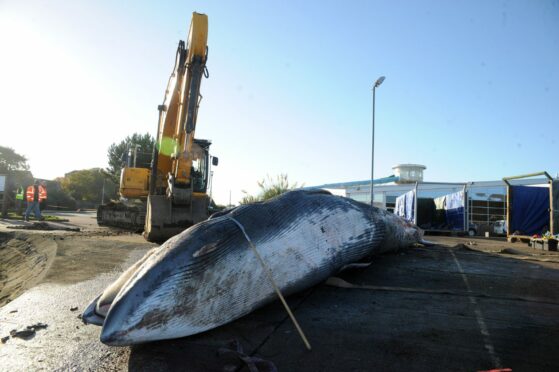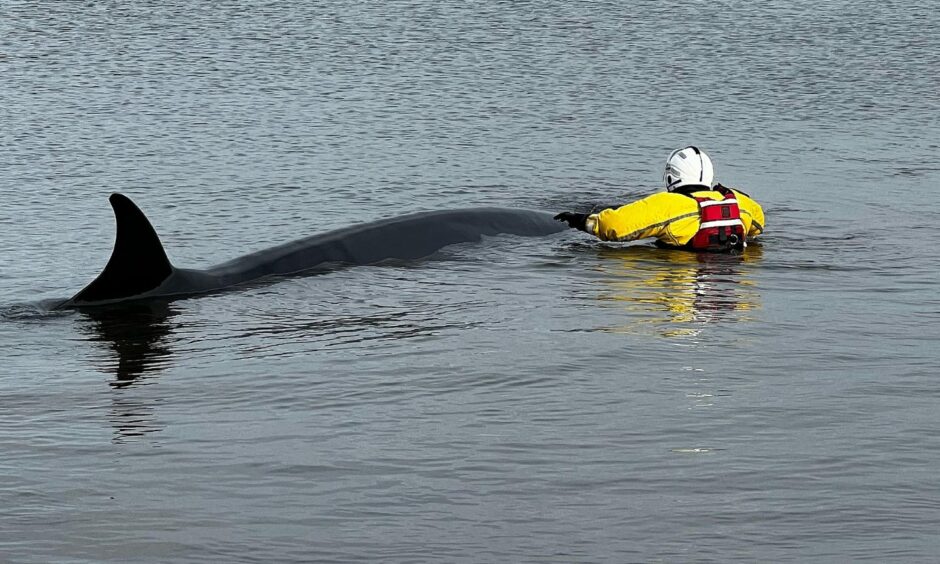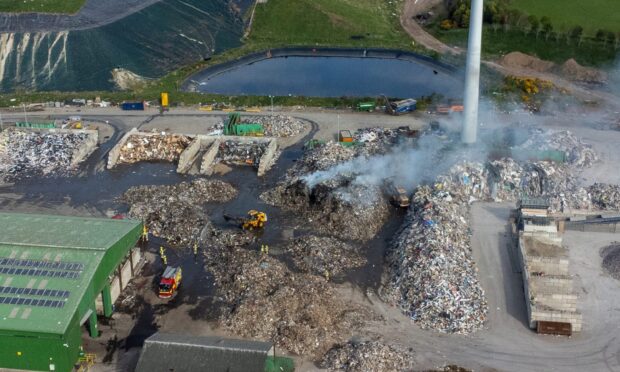A dead Sei whale found washed up in Fife last week is believed to be only the second of its kind to become stranded in Scotland for at least 30 years.
We reported how a post mortem had been carried out on the dead animal over the weekend, with scientists suggesting it may have died after struggling to feed.
The 37ft long adult whale had previously become stranded near North Queensferry, with divers from the British Divers Marine Life Rescue (BDMLR) helping it back out into the Forth.
Sadly the whale was rediscovered near Burntisland just 24 hours later on November 11, with markings allowing it to be identified as the same animal seen the previous day.
Fife Coast and Countryside Trust (FCCT), which facilitated the post mortem and recovery of the whale, said it is believed to be only the second time in 30 years that the species has become stranded in Scotland.
It is hoped the post mortem will provide vital clues as to why the whale died and how future strandings could be prevented.
A spokesperson for FCCT told The Courier: “The stranding of Sei Whale in Scotland is very rare and in the last 30 years to the best of our knowledge it has only happened twice.
“A request was made from the Scottish Marine Animal Stranding Scheme (University of Glasgow) to recover the whale for a necropsy, a legislative entitlement.
“As this happened in the Forth Estuary, it was important to try and identify the reasons why the young whale had perished and possibly what actions can be done to prevent further standings.”
Why was the dead whale taken to landfill in Fife?
Following the post mortem, the animal was transported to Lochhead Landfill Site in Dunfermline for disposal.
But locals questioned why the whale’s body was sent to a landfill rather than being disposed of back into the sea where it could contribute to the ecosystem.
Fife Coast and Countryside Trust explained that the carcass could have posed a danger in the Forth.
“Normally when whales die in the ocean, their bodies do eventually sink to the ocean bed and the carcass becomes an ecosystem for other fish and sea animals.
“However, when floating in a busy shipping lane such as the Forth they can become a hazard to watercraft.”
Whale and Dolphin Conservation, the UK’s leading charity, also explained that logistically it can prove too difficult to take the dead animals back out to deep enough water.
Dead whales pose ‘logistical challenge’
Without doing this there would be a risk it could wash back up onshore.
The post mortem process also complicates disposal, they explained: “Once this has been completed, the whale or dolphin is then seen as a health hazard as the cause of death could be disease for example.
“In these cases the animal will need to be removed and disposed of safely.”
The charity also said it could even be irresponsible to return the animal to sea.
To return a heavily polluted animal would be considered irresponsible
Whale and Dolphin Conservation
They added: “Many whales and dolphins strand because of excessive levels of pollutants in their system, like PCBs.
“Some whales, like belugas, are actually treated in the same way as toxic waste when they stand, and to return a heavily polluted animal would be considered irresponsible.”
It’s not the first time dead whales discovered in Fife have posed logistical problems.
In 2012, 17 pilot whales died after becoming stranded on a beach near Anstruther, with their bodies eventually transported to Moray. It was reported that the operation had cost Fife Council as much as £12,000.













